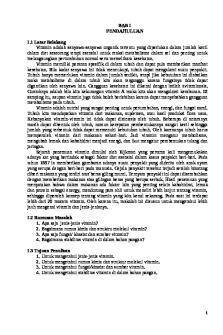Cholecalciferol (Vitamin D3-inactive) PDF

| Title | Cholecalciferol (Vitamin D3-inactive) |
|---|---|
| Author | Catherine Espinosa |
| Course | fundamentals of nursing |
| Institution | Raritan Valley Community College |
| Pages | 2 |
| File Size | 65.9 KB |
| File Type | |
| Total Downloads | 48 |
| Total Views | 163 |
Summary
Download Cholecalciferol (Vitamin D3-inactive) PDF
Description
Drug Study Generic Name: cholecalciferol (vitamin D3 (inactive))
Drug Classification: Therapeutic:vitamins Pharmacologic: fat-soluble vitamins Therapeutic Uses: : Treatment and prevention of deficiency states, particularly bone manifestations.
Maximum Dosage/24 hours: 1000 IU daily
Possible Routes of Administration: PO
Usual Dosage and Frequency: 400-1000 IU daily This Patient’s Dose and Frequency: 1,000 IU daily PO Mechanism of Action: Requires activation in the liver and kidneys to create the active form of vitamin D3 (calcitriol). Promotes the intestinal absorption of dietary calcium
Adverse Effects: Seen primarily as manifestations of toxicity (hypercalcemia) CNS: headache, irritability, somnolence, weakness. EENT:conjunctivitis, photophobia. CV:arrhythmias, hypertension. GI: anorexia, constipation, dry mouth,qliver enzymes, metallic taste, nausea, PANCREATITIS, polydipsia, vomiting, weight loss. GU:albuminuria, azotemia, polyuria.Derm: pruritus. F and E: hypercalcemia.MS: bone pain, muscle pain.
Nursing Implications: Assess for symptoms of vitamin deficiency prior to and periodically during therapy. Assess patient for bone pain and weakness prior to and during therapy. Observe patient carefully for evidence of hypocalcemia (paresthesia, muscle twitching, laryngospasm, colic, cardiac arrhythmias, and Chvostek’s or
Trousseau’s sign). Protect symptomatic patient by raising and padding side rails; keep bed in low position. Lab Test Considerations: Monitor serum calcium, phosphorus, and alkaline phosphatase periodically. Toxicity and Overdose: Toxicity is manifested as hypercalcemia, hypercalciuria, and hyperphosphatemia. Assess patient for appearance of nausea, vomiting, anorexia, weakness, constipation, headache, bone pain, and metallic taste. Later symptoms include polyuria, polydipsia, photophobia, rhinorrhea, pruritus, and cardiac arrhythmias. Notify health care professional immediately if these signs of hypervitaminosis D occur. Treatment usually consists of discontinuation of cholecalciferol, a low-calcium diet, or administration of a laxative. IV hydration and loop diuretics may be ordered to increase urinary excretion of calcium. Hemodialysis may also be used.
Patient Teaching: Review diet modifications with patient.
Encourage patient to comply with dietary recommendations of health care professional.
Explain that the best source of vitamins is a well-balanced diet with foods from the 4 basic food groups and the importance of sunlight exposure.
Advise patient to avoid concurrent use of antacids containing magnesium.
Review symptoms of overdose and instruct patient to report these promptly to health care professional....
Similar Free PDFs

Cholecalciferol - Medication
- 1 Pages

Vitamin Chart
- 5 Pages

VITAMIN-K
- 4 Pages

Analisis Vitamin
- 90 Pages

vitamin A
- 12 Pages

Vitamin K
- 1 Pages

Metabolisme Vitamin
- 14 Pages

MAKALAH VITAMIN
- 10 Pages

Vitamin B
- 58 Pages

VIAL VITAMIN C Tugas
- 15 Pages

penyuluhan Vitamin A.pptx
- 11 Pages

Vocational Link - vitamin C
- 3 Pages

BIOKIMIA TENTANG VITAMIN
- 23 Pages

SEDIAAN INJEKSI VITAMIN C
- 7 Pages

Pengujian kadar vitamin C
- 1 Pages
Popular Institutions
- Tinajero National High School - Annex
- Politeknik Caltex Riau
- Yokohama City University
- SGT University
- University of Al-Qadisiyah
- Divine Word College of Vigan
- Techniek College Rotterdam
- Universidade de Santiago
- Universiti Teknologi MARA Cawangan Johor Kampus Pasir Gudang
- Poltekkes Kemenkes Yogyakarta
- Baguio City National High School
- Colegio san marcos
- preparatoria uno
- Centro de Bachillerato Tecnológico Industrial y de Servicios No. 107
- Dalian Maritime University
- Quang Trung Secondary School
- Colegio Tecnológico en Informática
- Corporación Regional de Educación Superior
- Grupo CEDVA
- Dar Al Uloom University
- Centro de Estudios Preuniversitarios de la Universidad Nacional de Ingeniería
- 上智大学
- Aakash International School, Nuna Majara
- San Felipe Neri Catholic School
- Kang Chiao International School - New Taipei City
- Misamis Occidental National High School
- Institución Educativa Escuela Normal Juan Ladrilleros
- Kolehiyo ng Pantukan
- Batanes State College
- Instituto Continental
- Sekolah Menengah Kejuruan Kesehatan Kaltara (Tarakan)
- Colegio de La Inmaculada Concepcion - Cebu
